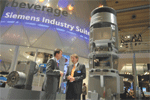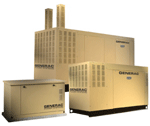
November 2007 – Volume 1, Issue 1
|
Dear
reader, this e-newsletter is being sent to you because we felt you
would benefit from the information it provides. If you would like to
subscribe, click here. If you would like to unsubscribe, click here.
Energy Management magazine arrives! Welcome to the first e-newsletter for Energy Management, a new magazine that will officially launch in December. Energy Management is the first step in what will be an ongoing, concerted, and passionate effort to “move the needle” on effective energy management in Canada. Each issue of Energy Management will deliver building owners, managers, facilities managers and engineers practical advice on energy management strategies and technologies to help them better manage their energy use and reduce costs. Each issue features expert columns, legislation updates, best practice case studies, and the latest energy efficiency and cost-savings products from lighting, power transmission and drives, heating ventilation and air conditioning (HVAC), energy management systems, test and measurement, building automation systems and much more. We’ve assembled a top-notch line up of expert columnists and our editorial team is hard at work making contacts and building bridges with the movers and shakers that are shaping this industry. We will provide the information, contacts and resources to help readers use less energy while achieving better results for their companies and facilities. Please view our prototype issue at www.energymanagementcanada.com. I welcome your feedback, so don’t hesitate to contact me at rcolman@clbmedia.ca. Robert Colman |
| FEATURE STORY
Can we produce ethanol more efficiently? Corn-based ethanol can displace the use of fossil fuels, but its widespread adoption comes with additional challenges — conventional ethanol production requires fossil fuels to manage the crop and to run the ethanol plant. Net fossil savings are only 20 per cent of the ethanol energy content. Although process efficiency improvements are likely to help over time, installing local generation could provide an immediate 300 per cent improvement in net fossil efficiency. Consider, for example, a 55 gallon-per-year dry-mill ethanol plant that requires roughly 130,000 pounds of steam (38 megawatts) to operate, plus about five megawatts of electricity. There are two energy supply options to manage this — conventional energy supply, or a combined heat and power plant (CHP). Although a CHP plant is expensive to build, it will satisfy the ethanol facility’s steam and electric needs, and export 45 megawatts of electricity to the grid. Full story: Can we produce ethanol more efficiently? |
| NEWS STORIES
U.S. Governor proposes bold approach to energy supply West Virginia Governor Joe Manchin addressed the Economic Club of Toronto in mid-October, outlining the challenges and possible solutions for the United States’ dependence on foreign oil. Asked to address his country’s national energy policy, he stated “we still don’t have one.” The governor, who also serves as chairman of the Southern States Energy Board, went on to say that he didn’t believe one would be created any time in the near future. “By 2020, it is said that we will start depleting the world’s oil reserves,” he noted. “Every presidential candidate knows this but won’t discuss it. I don’t believe (policy change) will happen in Congress, I think it will happen state by state.” Full story: U.S. politician calls for new energy approach Canada could be energy superpower, say experts Canada needs huge national projects comparable to the building of the transcontinental railway or the oil sands to become a sustainable, environmentally sound, energy superpower, energy experts meeting in early October at the University of Calgary say. Three bold technology projects, backed by hundreds of millions of dollars and a coordinated national strategy, will make Canada a global leader in addressing the ‘collision’ between energy and environment that will dominate this century, delegates to the Canadian Academy of Engineering (CAE) Energy Pathways workshop say. Full story: Canada could be energy superpower |
| CASE STUDIES
Hot times in Whistler The resort community of Whistler, B.C., the largest ski resort in North America offering year-round activities, will soon be hosting the 2010 Winter Olympics. In preparation for the games, numerous infrastructure projects were identified to ensure a secure Olympics. This included the installation of energy-saving hybrid heating systems in area hotels, which reduced costs and cut greenhouse gas emissions by 14%. Full story: Hot times in Whistler |
| ENERGY EFFICIENT PRODUCTS | |
 |
Variable speed ac drives
Schneider Electric Canada has introduced Simply Smart industrial ac drives for 3-phase asynchronous motors from 0.5 to 900 hp. The Altivar 71 model, dedicated to all industrial applications, is complemented by the Altivar 61, for pumps and fans. Altivar 71 can deliver up to 220% overtorque; 130% for Altivar 61. Both drives offer flux vector control (FVC) with or without sensor, online auto-tuning, speed or torque control, output frequency up to 1000 Hz and an energy saving function for pump and fan applications. One drive can independently control up to 3 motors, units withstand voltage drops of up to -50%, RF interference and operating temperatures up to 50ºC (without derating). www.schneider-electric.ca |
 |
High thrust rod actuator The Type CRES high thrust rod actuator from THK is said to produce maximum operating efficiency, while a low voltage dc motor (12 V”15%) contributes to reduced energy consumption. The IP55 unit provides a maximum stroke of 130 mm, making it suitable for packaging machines, automatic seat positioners, panel operating mechanisms, positioning systems, height adjusters and opening/closing mechanisms. Nominal speed ranges are from 15 to 55 mm/s, with a nominal feeding force of 196 to 490 N. thk.com |
 |
Low-voltage motors Siemens Automation and Drives (A&D) introduced a new range of IEC low-voltage motors with aluminum housing. The new motors of the 1LE1 series are offered in the efficiency classes EFF1 and EFF2. The energy-efficient EFF1 motors achieve their high efficiency through the use of copper rotors. www.siemens.com |
 |
Power up with QT gensets Generac Power Systems offers QT series gensets, which help protect against disruptive and costly power (energy) interruptions. The new model line-up includes liquid-cooled offerings with outputs ranging from 20 to 150 kilowatts, all with sound-attenuated enclosures and the Quiet Test feature. The 100 and 150 kW models are compatible with Generac’s Modular Power System, making possible for the creation of higher output systems, says the company. QT gensets are natural gas or LP vapour-fuelled, so there isn’t the fuel-spillage, spoilage or odour concerns that are common with diesel models, says the company. OHVI (overhead valve industrial) engines power Generac’s air-cooled products. They’re matched with new, high-output alternators to produce greater amounts of standby power, says the company. All the 2007 automatic standby products feature Rhino-Coat, which is Generac’s new textured paint finish. This durable, long-lasting protection provides consistent coverage and better bonding to seams and edges to resist corrosion, says the company. www.generac.com |
If you would prefer not to receive this email, simply click Unsubcribe. If there are others in your organization that may benefit from being on the distribution list, please let us know by return email.
Click here if you are having technical problems.
Note: The message format in your email software must be set to HTML to view graphics in this e-newsletter.
Your email address will not be sold or passed on to any third party. It is only used for magazine-related purposes, such as renewing your subscription and this e-Newsletter. Please see our Privacy Policy for more details.
CLB Media Inc. disclaims any warranty as to the accuracy, completeness or currency of the contents of this e-Newsletter and disclaims all liability in respect of the results of any action taken or not taken in reliance upon information in this e-Newsletter.
© CLB Media Inc., 2007. You may forward and reproduce this e-Newsletter without modification, provided that you include this copyright notice and the above-mentioned disclaimer.
